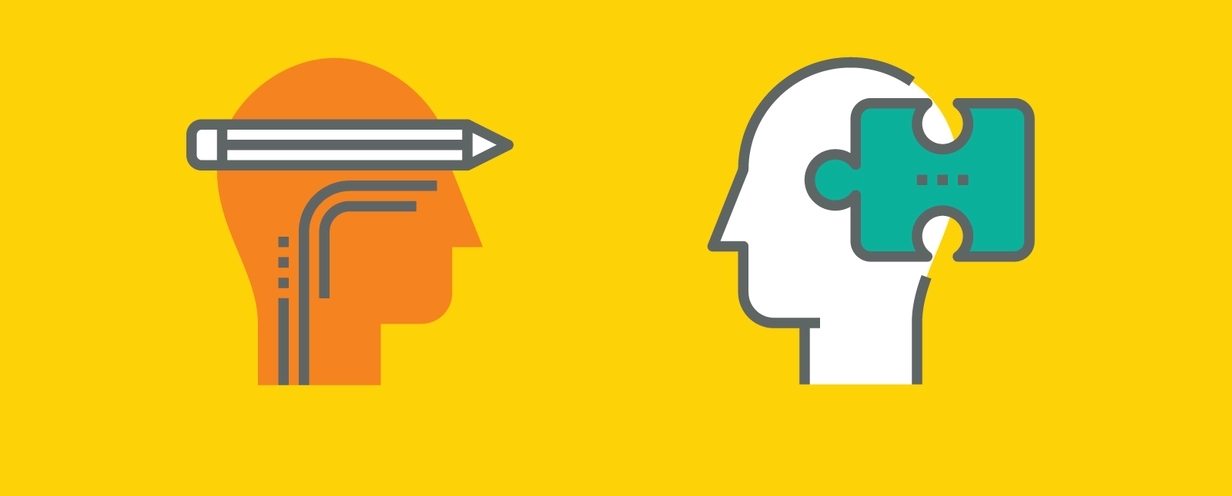
Achieving goals vs. solving problems (and why UX teams need both)

They say there are two types of people in this world. While that statement is often an oversimplification, it can be true for our motivations at work. According to some thought leaders in organizational psychology, people tend to fall into two categories: those who are more strongly motivated by goals and those who are more strongly motivated by problems. It doesn’t take a psychologist to see these two types in action on a UX team. If you manage UX researchers and designers, you’re likely to recognize these two motivation patterns in your own team members. You need a balance of goal achieving and problem solving to ensure the best outcome for your users. Here’s an overview of the two types—and how you can strike an optimal balance on your team.
Goal achievers
People who are motivated by goals are the ones with the vision. They focus on the future and constantly think about what the team can be building next—and how to get there. They’re the first to come forward with ideas for new products or features. Goal achievers place a high value on innovation, especially when it produces clear-cut, easily measurable business results. They like to have number-oriented goals so that they can definitively say when their project has succeeded.
People who focus on goals get excited about exploratory research and measurable outcomes.
Their eagerness doesn't mean they skip over research; in fact, they can get very absorbed in generative research. They like to discover what users currently do, think, and feel so they develop a clear vision of what needs to be built. Having an accurate understanding of the users’ current situation and the desired outcome helps them set goals that are both challenging and realistic. They may be most interested in 1:1 user interviews, contextual inquiry, and other early-stage research methodologies. The downside is they can tend to write off the things that may go wrong, and they’re tempted to skip over making tedious (but needed) improvements. This can result in occasionally setting unrealistic deadlines because they don’t allow enough time for troubleshooting.
Goal achievers and your team
A team made up of only goal achievers runs the risk of shipping a really exciting product that has loads of usability problems. Their backlog can get overloaded with problems that will never be prioritized and solved because they’ve already moved on to the next big thing. To motivate the goal achievers on your team, encourage them to set their own goals that support the overall product and company outcomes, rather than simply assigning them projects and tasks. Reward them for meeting their goals, and be sure to remind them to allow extra time for fixing the problems that will inevitably occur during development.
Problem solvers
Team members who are motivated by solving problems ensure you aren’t taking one step forward and two steps back. They’re great at identifying hiccups and usability issues in a workflow. While they’re usually the ones who see the problem first, they also champion solutions. Having problem solvers on your team is crucial for ensuring a highly usable product and for paying off UX debt. Problem solvers are great at conducting evaluative research. They’re eager to find what’s not working, so they’re likely to be interested in usability testing. It’s very rewarding to them to identify and eliminate anything that could derail the user experience.
Problem solvers are excellent at finding and fixing issues that could hurt the user experience.
They’re more willing than goal achievers to work on solutions that aren’t as easily tracked to ROI. They’re often the ones who will fight for small improvements that have very little chance of increasing revenue, such as standardizing the tone of the copy or the color usage in a product. To them, anything that’s wrong is worth fixing—especially if it could irritate users. The challenge for problem solvers is their occasional tendency to fixate on small problems rather than focusing on the big picture. Their affinity for discovering issues can make them come across as pessimistic or overly critical to their goal-achieving colleagues.
Problem solvers and your team
If your UX team only has problem solvers, you may be limited in the amount of innovation and risk-taking you’re able to do. You might refine a single product until it’s error-free but never move on to the experimental new feature that could really move the needle for your company. To keep your problem-solving team members engaged, be open about sharing your concerns on a product, and allow them ample time for testing and iterating. Encourage them to take on projects from the backlog involving improvements to existing products. Coach them on presenting their findings in a way that doesn’t discourage their colleagues.
Balancing the two motivation types on your team
The most effective UX teams have a balance of goal achievers and problem solvers to keep each other in check. While goal achievers can help keep the inspiration and morale high, problem solvers can make sure important issues don’t get neglected. This balance means your team will occasionally face conflict over what projects get prioritized. When this occurs, remind the team that a great product needs to achieve business outcomes as well as provide a smooth user experience. Weigh improvements in objective terms of how much it’s costing the company to leave it unfixed. This includes how much revenue may be lost, how much it could damage the user’s ability to do what they need to do, and the impact on the user’s impression of the company.
Goal achievers and problem solvers can both benefit from user empathy.
Both types of team members require a healthy dose of user empathy. Give the team time to sit down together and review video clips and quotes from your research. Watching users interact with a product—and then discussing their journey—will help your team members appreciate each other’s perspective. To learn more about assembling a well-rounded UX team, be sure to check out our eBook, 4 Stages of Building and Scaling a UX Team.





